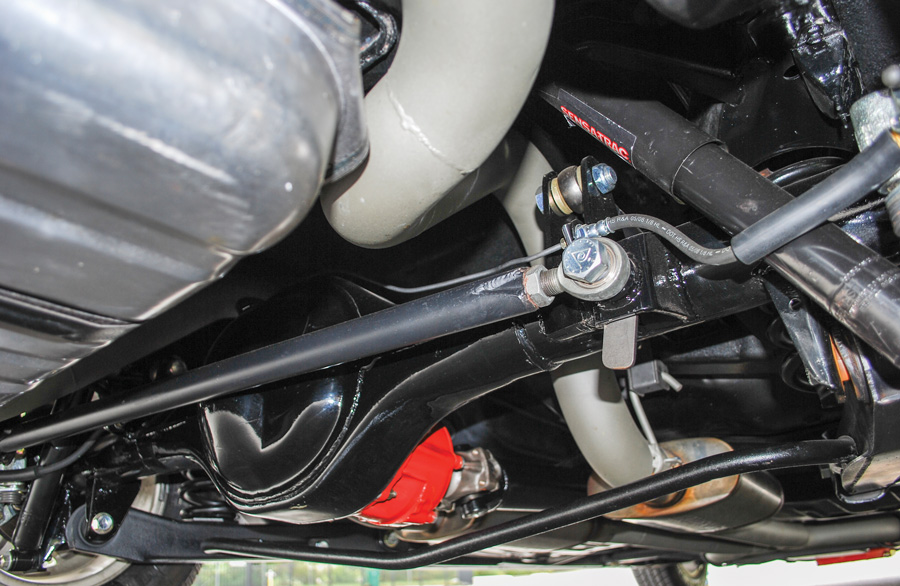 Feature
Feature

hen you think about fullsize cars you generally don’t think about big-time performance, even though some of the cars came from the factory with potent big-blocks. The 2-ton sedans just don’t strike a chord with “go-fast” enthusiasts, but this 1968 Bel Air is a whole different animal. It’s not your average fullsize Chevrolet, as it boasts 725 hp, thanks to a wicked SB2 engine plucked from a retired NASCAR Cup Series race car. Teddy McClure is the proud owner, and he hails from Chilhowie, Virginia. Teddy and his brothers were heavily involved with NASCAR racing during the ’80s and ’90s, with drivers such as Mark Martin and Ernie Irvan driving for their team. He has since retired from Morgan-McClure Motorsports Inc., but it’s easy to see where he got the inspiration for this SB2-powered Bel Air.
Underneath, the fullsize Chevy features a simple setup that offers great handling and a comfortable ride. The ride height is lowered a total of 4 inches up front and 3½ inches out back, while SSBC 10½-inch disc brakes roll on all four corners to bring the big Bel Air to a halt. The car features front and rear sway bars, as well as boxed control arms with custom double-adjustable Heim joints for the top bars. This allows Teddy to easily make adjustments to the original multi-link suspension setup in an effort to increase traction.

Coming in at 357 ci, thanks to a 4.170-inch bore and 3.265-inch stroke, the SB2 engine came out of Robert Hughes’ shop with the full NASCAR treatment. Just like the NASCAR Cup engines, Teddy’s features a dry-sump oiling system, complete with a Moroso pan and Stock Car Products pump. The cylinder heads are GM SB2 castings and flow tons of air, brought in by an SB2-617 intake manifold and Holley 830-cfm carburetor, which is fed by a CV Products mechanical fuel pump. Horsepower comes in at 725 at 7,800 rpm, while the SB2 cranks out 510 lb-ft of torque at 6,500 rpm. For a naturally aspirated combination with only 9.858:1 compression, those are some incredible numbers, and the best part is the fact that it’s mild-mannered on the street.
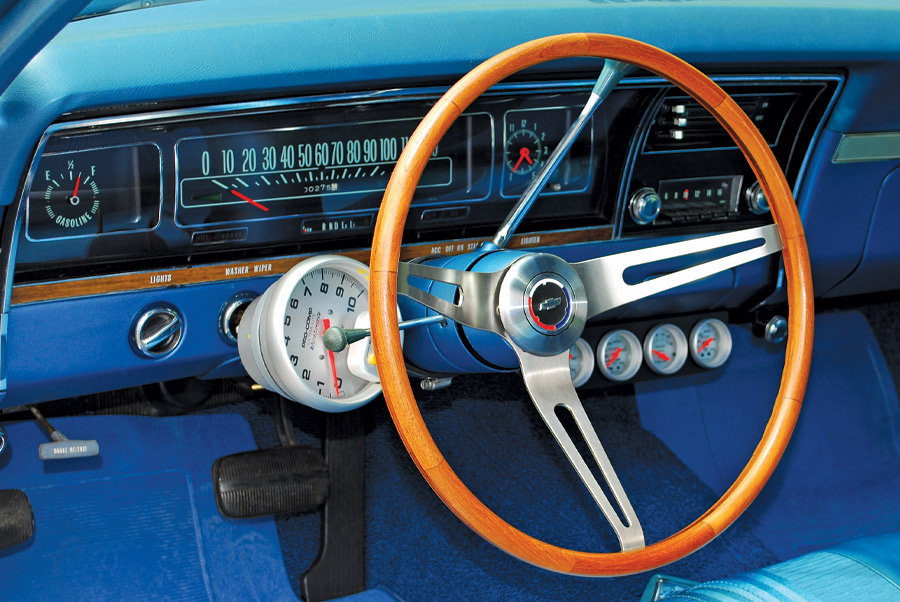
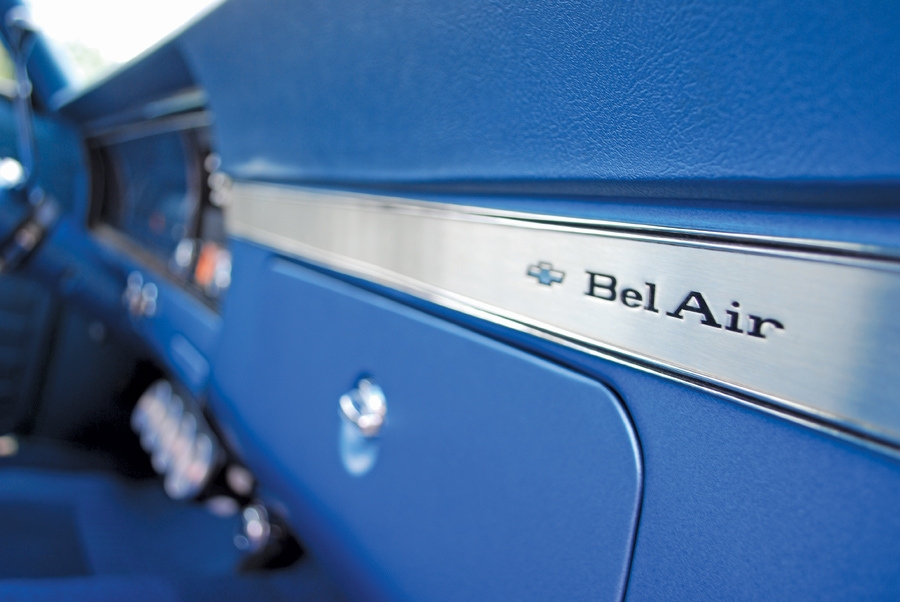

In case you haven’t noticed, Teddy’s Bel Air is a bit of a sleeper, with its all-stock body, but it still took a bunch of work to get the car looking this great. A slick coat of paint is the product of Lester’s handiwork, as he handled all of the bodywork and preparation for paint. The Teal Blue Axalta materials have been sanded and buffed to a flawless finish, and the tame color combination suits the reserved styling of the two-door post sedan perfectly.

In case you haven’t noticed, Teddy’s Bel Air is a bit of a sleeper, with its all-stock body, but it still took a bunch of work to get the car looking this great. A slick coat of paint is the product of Lester’s handiwork, as he handled all of the bodywork and preparation for paint. The Teal Blue Axalta materials have been sanded and buffed to a flawless finish, and the tame color combination suits the reserved styling of the two-door post sedan perfectly.

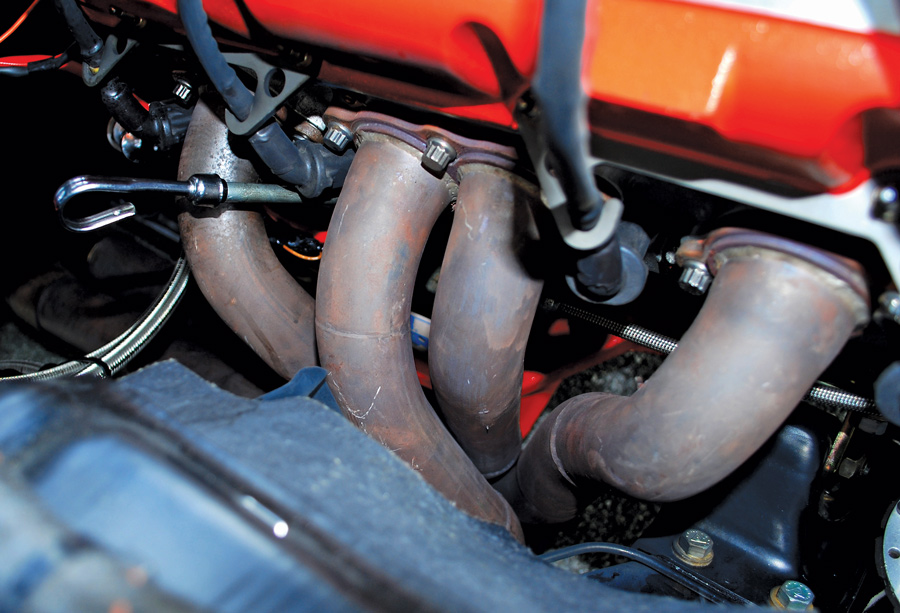

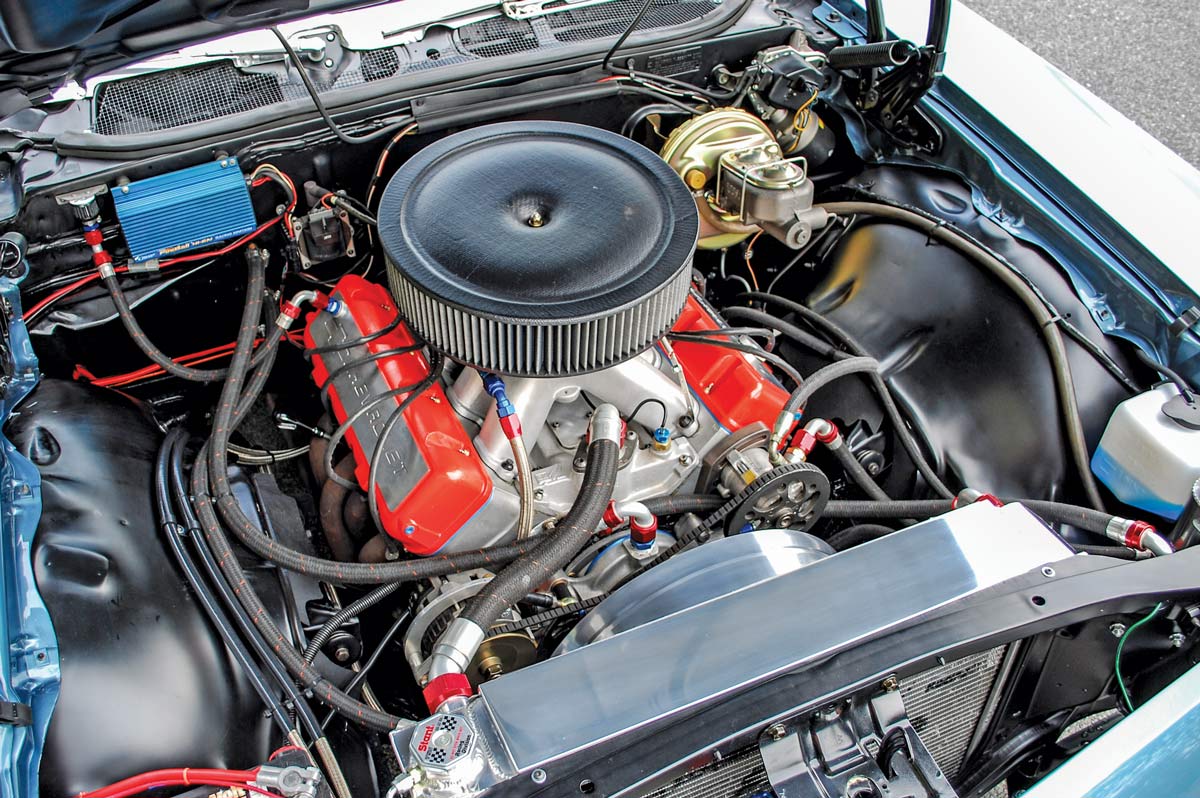
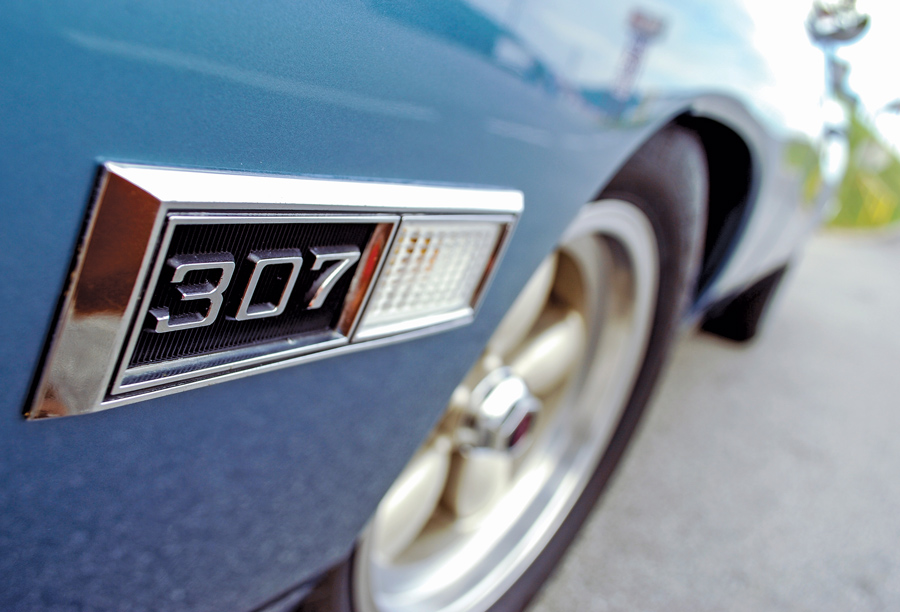


 TECHCHECK
TECHCHECKVehicle: 1968 Chevrolet Bel Air
Type: NASCAR Spec SB2
Displacement: 357 ci
Compression Ratio: 9.858:1
Bore: 4.170 inches
Stroke: 3.265 inches
Cylinder Heads: GM SB2 castings
Rotating Assembly: Bryant crankshaft, JE pistons
Valvetrain: Crower roller lifters, Trend pushrods, T&D rocker arms (1.90 intake, 1.95 exhaust)
Camshaft: NASCAR spec roller
Induction: SB2-617 intake, Holley 830-cfm four-barrel carburetor
Ignition: Crane Cams Fireball Hi-6N
Exhaust: ProFab Tri-Y stepped headers, X pipe, MagnaFlow mufflers, 3-inch pipes
Output (at crank): 725 hp at 7,800 rpm and 510 lb-ft of torque at 6,500 rpm
Transmission: GM 700-R4 automatic overdrive, built by R.J. Stanley, TCI 3,500-rpm stall
Rear Axle: 9-inch housing, 4.50:1 gears, Detroit locker
Front Suspension: Stock-style, lowered 4 inches
Rear Suspension: Boxed control arms, lowered 3 inches
Brakes: SSBC 10½-inch disc brakes
Wheels: 15×7 and 15×8.5 American Racing 200S
Tires: 215/70R15 and 275/60R15
Upholstery: CARS Inc. kit
Material: Blue vinyl
Seats: Bench seats
Steering: Corvette wheel
Shifter: Column shifter
Dash: Original
Instrumentation: Original cluster with AutoMeter gauges
Audio: Original AM radio
HVAC: N/A
Bodywork: Zeke Lester
Paint By: Zeke Lester
Paint: Axalta Teal Blue
Hood: Original
Grille: Original
Bumpers: Original


Without question, Teddy’s Bel Air is a strong performer, as it offers race-ready power with street-friendly characteristics. The car gets a lot of attention, especially when the hood is open to reveal the car’s secret weapon. It’s a flawless representation of big power in a big car, and with Teddy’s racing background, you can bet the SB2 is put through the wringer quite often.
